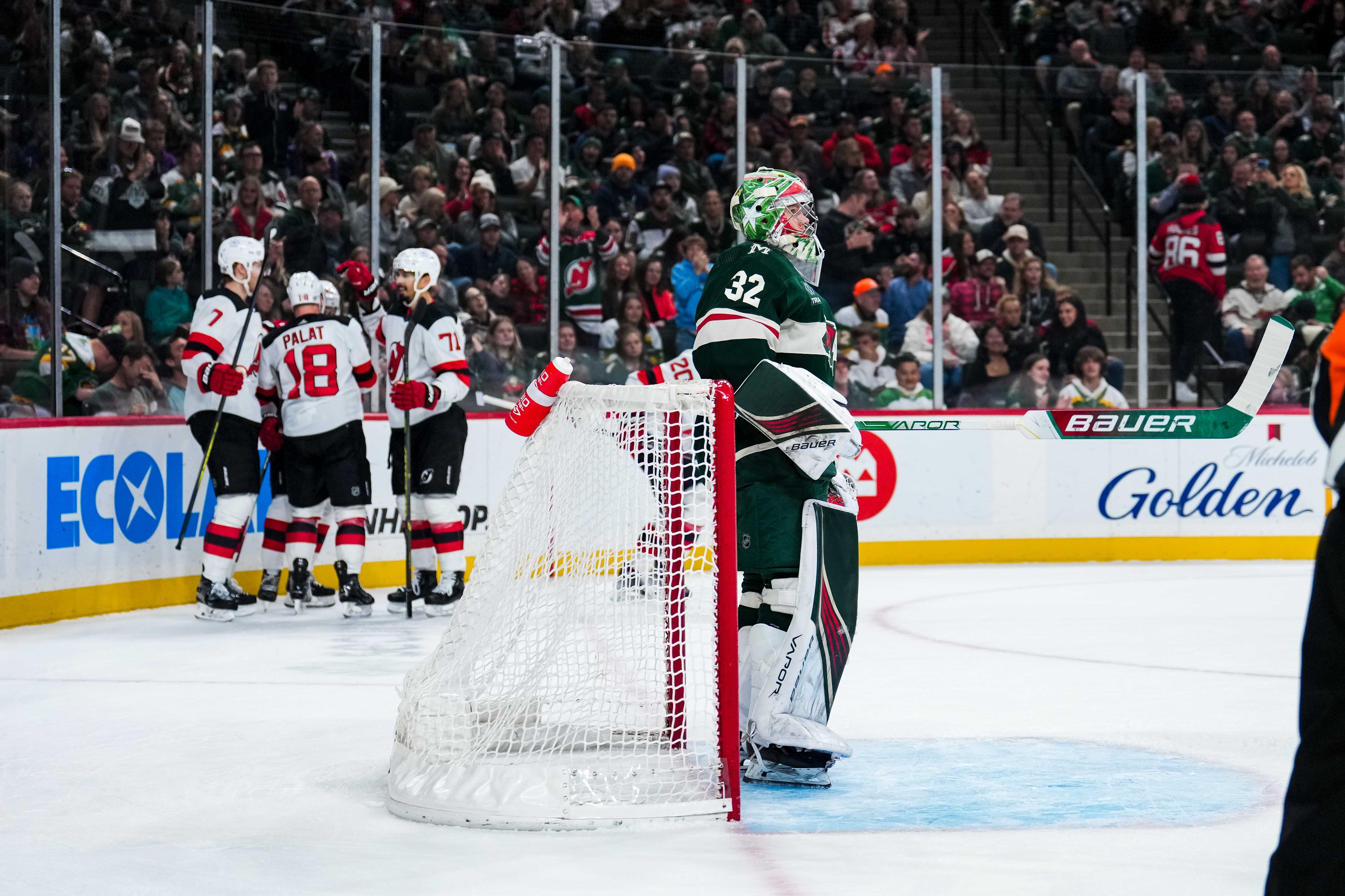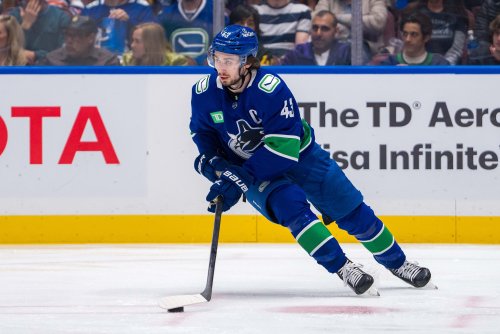
Here we go again. Stop me if you’ve heard this before: “Special Teams are killing the Minnesota Wild.” The start to 2023 has been no different.
Now 3-5-2 following another loss spurred on by special teams woes, the penalty kill has officially become more than just a small sample size issue. Truth be told, we could sit here and dissect/complain about the power play too. But as the old saying in hockey goes: You can survive with a poor power play, but you’re dead on arrival if your penalty kill is bad.
And that’s exactly what’s playing out in front of our eyes with this year’s team. While the power play has been lacking at times, the penalty kill is the bigger problem through the first 10 games. They are currently dead-last in the NHL at 63.9%. When your team is performing worse at a key part of the game than the San Jose Sharks, who may finish with the worst record in NHL history this year, you know it is a serious problem.
Some of the issues on the penalty kill are obvious. Goaltending has been a problem for the Wild all year, in all facets of the game -- not just the penalty kill. If Filip Gustavsson returned to his level of play from last year, you would immediately see a penalty kill performing above average. But as important as goaltending is to the penalty kill, a coach can’t simply call on his players to perform better. Dean Evason and his staff need to look further into their penalty killing tendencies and find ways to help this team, and fast.
So while calling out goaltending and faceoff woes isn’t wrong, it’s not going to help this unit improve. So where can the Wild coaching staff help out? Luckily for them, I watched every single penalty kill this season in an effort to find some common tendencies that may be contributing to their demise. There's one key takeaway I would immediately change about their penalty killing strategy.
Don’t just pressure for the sake of pressuring. Have a damn plan.
Earlier this week, Evason talked about their decision making on the kill: “It’s when to pressure, when not to pressure. Our decision making has been a little off in that regard. When things go well, the best thing to do is make an aggressive mistake, in any part of your game.”
Huh? It’s that last part that has me a little concerned about the coaching staff’s communication to their players. Because the tape is showing a team trying to be aggressive on the penalty kill, but in all the wrong ways. It’s important to be aggressive when short a man, but there must be a plan to it, and all players need to be on the same page. The Wild seem to be running around for the sake of running around, particularly in the neutral zone. And it’s hard to see how coaching isn’t playing a role there.
Too many times, the Wild forwards are too wide or too close to the center red line through the neutral zone as the opposing team rushes up the ice. Most coaches would tell you it’s important to clog up the middle and use the natural pressure point on the ice that is your own blue line to your advantage. But below against Washington they do neither.
Here, Ryan Hartman and Joel Eriksson Ek are both holding their ground at the red line and are each outside the faceoff dots on their respective sides. It leaves the middle of the ice wide open, and makes Washington's entry even easier with all the space to operate between the Wild’s forwards and defenseman. Now compare that neutral zone set up to the Boston Bruins, who currently lead the league in penalty kill success rate.
The difference here is blatantly apparent. Watch as the Florida Panthers rush up through the neutral zone to try and gain entry into the offensive zone. Boston concedes the center red line because it doesn’t matter on the penalty kill quite like it does at 5-on-5. You only have two forwards when on the kill. You simply don’t have the number of bodies necessary to clog up the neutral zone.
But you can wreak havoc standing up at your own blue line, and having your forwards stay inside the defenseman. The difference in the way the Bruins can apply pressure, but in a smarter area on the ice, allows them to turn opposing power plays away more often and spend less time actually defending a power play in their own zone. It’s something the Wild should replicate.
Here’s another example of the Wild’s concerted effort to have their forwards pressure opposing power plays as they approach center ice and the immediate aftermath. Again, it’s Hartman and Eriksson Ek who find themselves playing aggressive in a poor area of the ice. The New Jersey Devils own best power play in the league, and they are able to sneak by Minnesota's two forwards with ease. The result is two Wild forwards trailing the play before the power play is even set up. It’s an immediate 3-on-2 for New Jersey as soon as they enter the zone.
The result is a penalty kill that spends the next five seconds scrambling to get into position in their own zone. They never recover, and the Devils score with ease because all the passing lanes are wide open with Minnesota still attempting to recover from their neutral zone gaffe.
And that’s the biggest issue with having your forwards step up at the blue line. The potential reward is so much lower than the risk it creates. I understand trying to be aggressive, but it has to be done in a smart way with a better plan. The key is to be aggressive in advantageous areas of the ice, such as your own blue line where a potential offsides creates a logjam of bodies and sticks, leading to a far greater potential for a turnover.
Below is an example of why weighing risk and reward is so important on the kill when implementing your strategy as a coach. The earlier clip shows how Boston placing their forwards closer to the middle of the ice and along their blue line led to a turnover and clear. But what happens to the Bruins 4-man unit if they don’t create a turnover at the blue line? Their decision to have their forwards be more selective with their pressure also places them in better position to immediately defend within structure following a clean entry.
Florida gains entry to the offensive zone cleanly in the clip above. And that’s fine because this is the NHL after all. Each team is capable of breaking through a neutral zone penalty kill set up at least half the time. But watch how much better positioned the Bruins are in their set up compared to how the Wild were scrambling in the above clip against New Jersey. Both Boston forwards are in place to take away passing lanes and make sure the Panthers don’t have a numbers advantage immediately after entering the zone.
And it’s not just Boston. Most top penalty killing units have identified their own blue line as the pressure point against an oncoming power play rush. The Dallas Stars' top-5 unit has the same strategy on the kill.
It’s a small detail, but the key to a good penalty kill is to not have your structure break down and get caught running around your own zone. The way the Wild are deciding to pressure at the center red line and not at their own blue line is giving them too many disadvantages before they try to set up in their own zone and defend against power play savants such as Alex Ovechkin, Jack Hughes, or T.J. Oshie.
Getting Matt Boldy back from injury, and captain Jared Spurgeon soon, are going to be a big help to their penalty kill. But the coaching staff needs a better plan for applying pressure in certain spots. Otherwise the Wild will soon find themselves booking travel plans to warm destinations in mid-April.
Think you could write a story like this? Hockey Wilderness wants you to develop your voice, find an audience, and we'll pay you to do it. Just fill out this form.
-
 1
1








Recommended Comments
Join the conversation
You can post now and register later. If you have an account, sign in now to post with your account.
Note: Your post will require moderator approval before it will be visible.